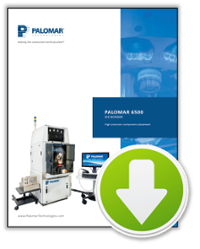 Have you ever had an ink jet printer that no matter what you did to calibrate it, you still had a bit of a blur? How you must have cringed as you printed out test sheet after test sheet, replacing cartridges to try and rectify it; one thing we all know is those cartridges are not cheap! This makes you want to go out and get a laser printer, but then you do a little research and find out that there are still plenty of applications where the ink jet may prevail.
Have you ever had an ink jet printer that no matter what you did to calibrate it, you still had a bit of a blur? How you must have cringed as you printed out test sheet after test sheet, replacing cartridges to try and rectify it; one thing we all know is those cartridges are not cheap! This makes you want to go out and get a laser printer, but then you do a little research and find out that there are still plenty of applications where the ink jet may prevail.
Ink Jet vs. Laser Jet
Ink jet versus laser jet is a complex argument—just Google it and you will see—so I wouldn’t go there. However, if you prefer ink jet you might be asking, “Why don’t they make these ink jets faster and more robust?” A lot of that has to do with alignment. There is a lot that goes on in taking the dots out of a print head and aligning with other dots to make the myriad of colors we demand, especially in projects such as photo printing.
I have had the opportunity to work with a couple of printer companies and as you would expect, they are constantly working towards the next generation of ink jet printers. One of the goals would be to eliminate alignment corrections. That will make the printers faster and more robust. There may also be cost reductions as you eliminate all, or some, of the mechanisms required for aligning. So why haven’t they done it before? One simple word: accuracy. The size of the ports on the ink jet die can be in the 5-10 micron arena. First you have the challenge of making the die themselves (usually very closely guarded IP), but if you are using multiple die you have to align the die to the substrate and relative to one another with extreme accuracy. It is a little bit like the photonics world where you have active alignment (compensation) versus passive alignment (high accuracy placement).
An Accurate Solution
This is where Palomar provides an answer to the concern over accuracy. The system in the Model 6500 die bonder will give the +/- 1.5 micron in the X&Y that allows us to place the first die with precision to the substrate and then place subsequent die relative to each other. We have also created complex algorithms where you can look at the overall substrate and place that first die in the best overall location to insure the subsequent die are also in optimum position relative to both the substrate and other print head die. Another key is theta rotation. This print head die can have a large aspect ratio, long and skinny. This makes the theta placement just as critical as the X&Y placement. The 6500 has better than .1 degree theta post placement.
first die with precision to the substrate and then place subsequent die relative to each other. We have also created complex algorithms where you can look at the overall substrate and place that first die in the best overall location to insure the subsequent die are also in optimum position relative to both the substrate and other print head die. Another key is theta rotation. This print head die can have a large aspect ratio, long and skinny. This makes the theta placement just as critical as the X&Y placement. The 6500 has better than .1 degree theta post placement.

If you are a printer company and trying to eliminate or greatly reduce the alignment requirements of your print heads, Palomar has the solution to solve these issues. If you are not making print head, but see some of the same challenges in accuracy and repeatability in your process or part, Palomar can provide solutions to these predicaments as well.
Learn more:
 |
Micron-Level Placement Die Printing |
----
Dale Perry
Regional Account Manager, Eastern Americas
Palomar Technologies, Inc.
